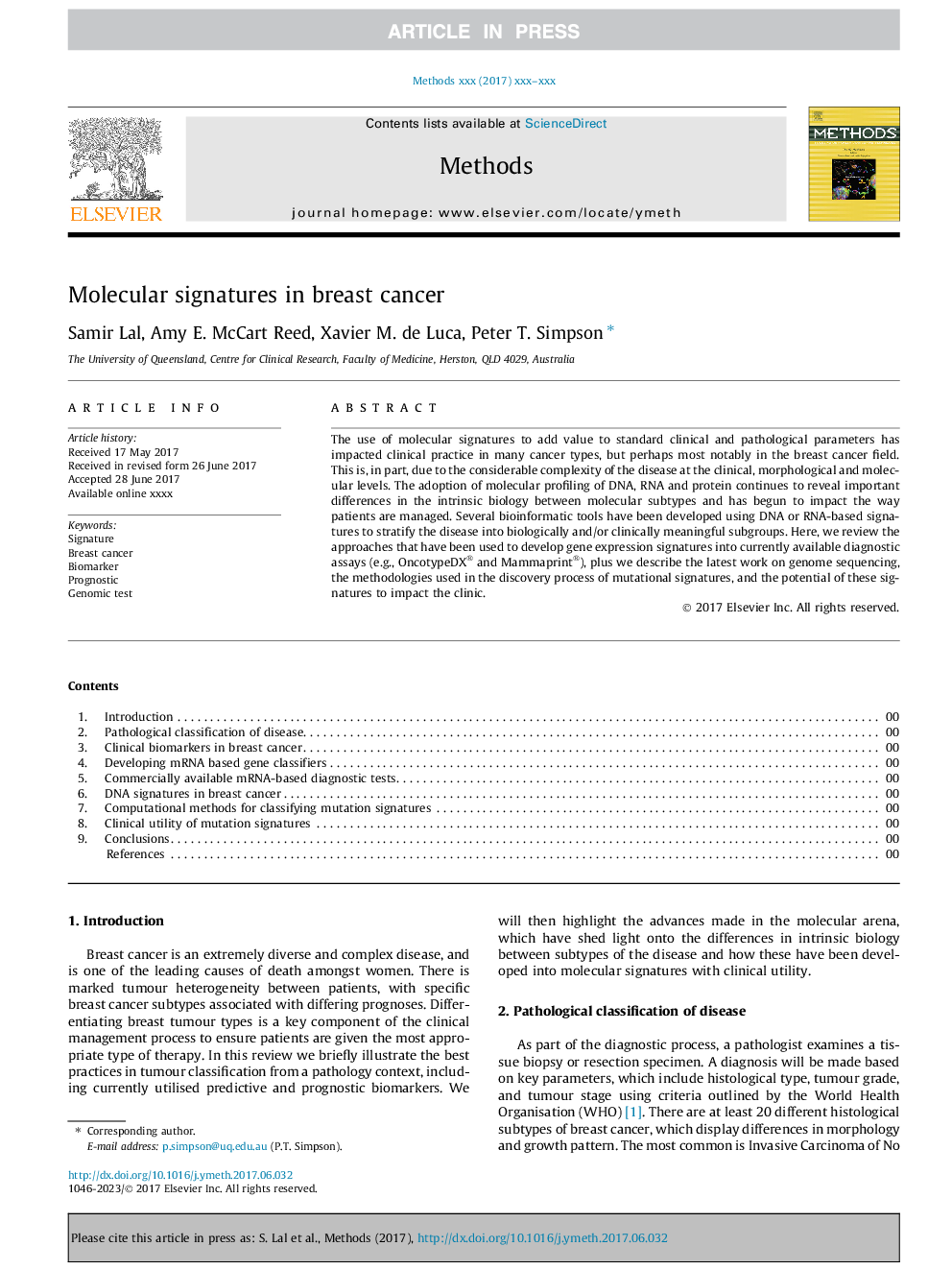| Article ID | Journal | Published Year | Pages | File Type |
|---|---|---|---|---|
| 8340172 | Methods | 2017 | 12 Pages |
Abstract
The use of molecular signatures to add value to standard clinical and pathological parameters has impacted clinical practice in many cancer types, but perhaps most notably in the breast cancer field. This is, in part, due to the considerable complexity of the disease at the clinical, morphological and molecular levels. The adoption of molecular profiling of DNA, RNA and protein continues to reveal important differences in the intrinsic biology between molecular subtypes and has begun to impact the way patients are managed. Several bioinformatic tools have been developed using DNA or RNA-based signatures to stratify the disease into biologically and/or clinically meaningful subgroups. Here, we review the approaches that have been used to develop gene expression signatures into currently available diagnostic assays (e.g., OncotypeDX® and Mammaprint®), plus we describe the latest work on genome sequencing, the methodologies used in the discovery process of mutational signatures, and the potential of these signatures to impact the clinic.
Related Topics
Life Sciences
Biochemistry, Genetics and Molecular Biology
Biochemistry
Authors
Samir Lal, Amy E. McCart Reed, Xavier M. de Luca, Peter T. Simpson,
